How to Install MySQL on Ubuntu 16.04 LTS?IntroductionMySQL is a relational database that is used to store data. It is most widely used database provides set of advance features, management tools, technical support, scalability and security. It is a product of Oracle Corporation and first released on 23 may 1995. RDBMS manages data into one or multiple data tables where data may be associated with each other. These types of relations aid in structuring the data. An RDBMS, such as MySQL, operates with OS to work with a relational database in the storage system, permits network access, manages users, backup creation, and provides a testing database of a computer in addition to SQL and relational database.MySQL includes stand-alone clients that permit users to directly interact with MySQL database with SQL. Overview of MySQLMySQL is specified in C++ and C. Its SQL parser is specified in yacc. MySQL works on various system platforms, such as Tru64, SCO UnixWare, Sanos, SCP OpenServer, Symbian, SunOS, Solaris, QNX, Oracle, OpenSolaris, OS/2 Warp, Novell NetWare, OpenBSD, NetBSD, macOS, Microsoft Windows, IRIX, Linux, IBM i, ArcaOS, FreeBSD, eComStation, HP-UX, AIX, and BSDi,. A MySQL port to OpenVMS exists as well. The MySQL server software and the client libraries utilize dual-licensing distribution. These both are provided upon GPL V2 or a proprietary license. The official manual can provide support. Additionally, free support is available in specific IRC forums and channels. Oracle provides paid support with MySQL Enterprise products. They are different in price and service scope. Several third-party enterprises are additionally available to offer services and support. Brief History of MySQLMySQL was developed by MySQL AB, a Swedish company, discovered by Allan Larsson, Swedes David Axmark, and Finland Swede Michael "Monty" Widenius. The actual MySQL development was started in 1994 by Axmark and Widenius. Initially, it was developed for personal use from low-level ISAM language-based mSQL, which the developers considered inflexible and too slow. They developed a SQL interface, although keeping a similar API to mSQL. Consistent API using the mSQL system, several developers can use MySQL rather than the MySQL antecedent. Features of MySQLMySQL has two editions. The first one is the Proprietary Enterprise Server, and the second one is the open-source MySQL Community Server. Some important features in MySQL 5.6 are listed below:
Project Forks of MySQLSeveral MySQL forks are available, including the below: Current
Abandoned
In this tutorial, we will install MySQL on Ubuntu 16.04 LTS. This whole process includes the following steps. Prerequisites
MySQL InstallationWe can use following command to install MySQL. 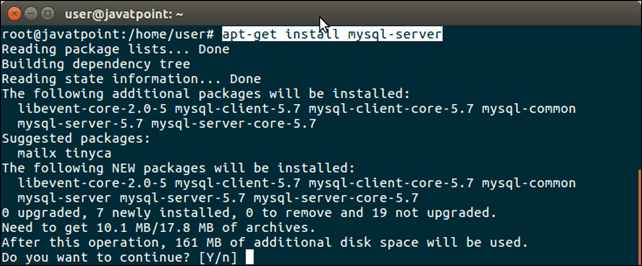
ConfigurationAt the time of configuration, it will prompt for MySQL credentials. 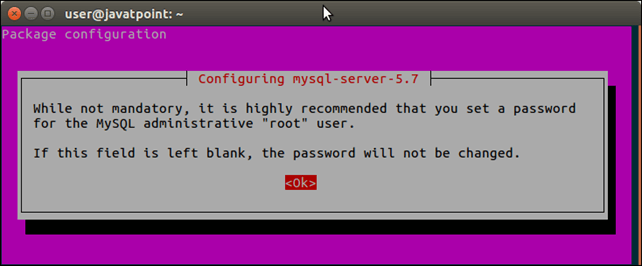
Provide password 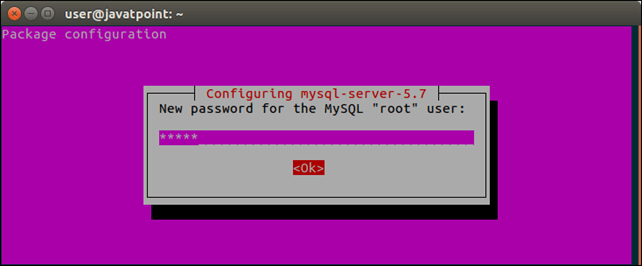
Confirm entered password. 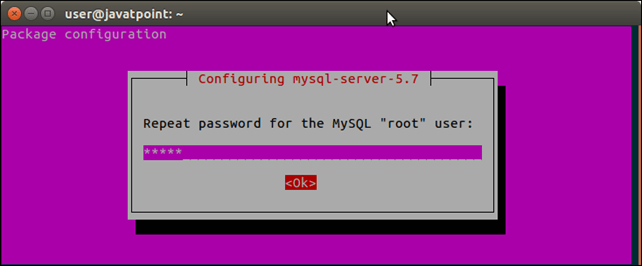
Login into MySQLuse the following command to login into MySQL. 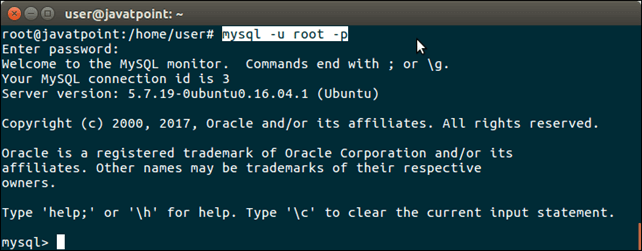
Well, we have successfully installed and logged in to MySQL. Extra InfoWe can use following commands to manage MySQL database. MySQL StatusUse the following command to check running status of MySQL. 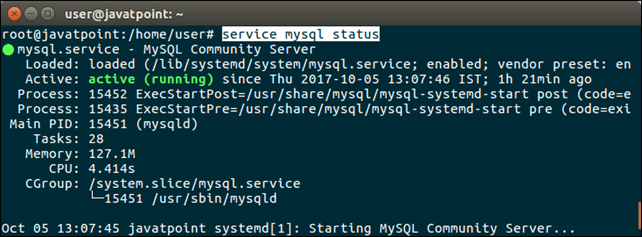
Start MySQLUse the following command to start MySQL database. Stop MySQLUse the following command to stop MySQL database. Restart MySQLUse the following command to restart MySQL database. Remove MySQLUse the following command to remove MySQL database. 
Use the following command to remove all packages that were installed automatically while installing MySQL database.
Next TopicHow To Install MariaDB In Ubuntu
|
 For Videos Join Our Youtube Channel: Join Now
For Videos Join Our Youtube Channel: Join Now
Feedback
- Send your Feedback to [email protected]
Help Others, Please Share









